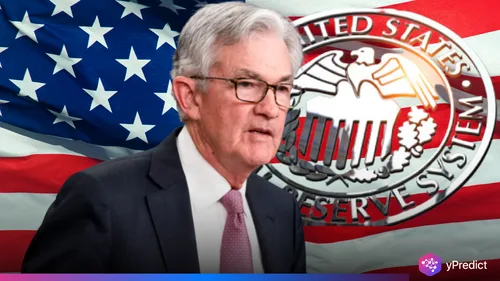
The gold rate in India increased on Friday, following a broader global trend fueled by geopolitical tensions and changes in trade policies. The safe-haven metal continues to be a strong hedge against volatile trading conditions, inflation, and exchange rate risks.
The trend is further supported by growing gold reserves held by emerging economies like India. The international currency market is watched closely by participants to predict the future course of gold.
Why Are Gold Rates Rising in India Today?
Gold prices have risen in India because the international currency markets are unpredictable these days, as sentiment across the globe has been mirrored through this. The gold price has risen from ₹9,149.95 per gram to ₹91,500.50 per 10 grams. The price per troy ounce was ₹284,595.60 previously. Due to increased risk aversion, institutional and retail investors have increased demand.
Secondly, the gold rate increase has support from worldwide factors. The US-China trade negotiations have recently produced more volatile market predictions comparatively. This is why investors are looking to gold as an asset class and the Federal Reserve’s consistent interest rates. Thus, India’s gold rate increase also follows world and regional finance trends.
How Do Global Events Impact the Gold Rate in India?
Investor interest in gold as a haven asset has been rekindled by regional tensions. The tensions are at the Indian-Pakistani border, Russia-Ukraine, and Yemen. The metals segment and international currency market are seeing traders cautiously reposition themselves because of these geopolitical flashpoints.
The other reason behind the increase in the price of gold is the approach adopted by central banks. Institutions across the world pumped a record 1,136 tons of gold reserves in 2022, valued at around $70 billion. Remarkably, countries like China, Turkey, and India are adding to reserves to protect themselves against economic weakness. This stockpiling solidifies the place of gold as the backbone of currency stability.
Technically, gold prices are steady despite bond yield pressure and a strong US dollar. Despite the Fed’s cautious approach to cutting rates, which has boosted the dollar, the Indian gold price is showing strength. The reason for this divergence is that gold also stands in contrast to the dollar and stocks, and thus is appealing in marketwide falls.
What’s Next for the Gold Rate in India?
As investors await significant comments from FOMC officials, the direction of gold may be decided by more dovish monetary policy signals. The commodity has a tough time with the Fed’s pledge to contain inflation without reducing interest rates right away. However, market participants still invest in gold due to persistent inflation concerns and possible recessionary threats.
In India, seasonal demand and festive shopping could also propel domestic prices upward. Moreover, in case geopolitical tensions continue to dominate and the currents of global trade continue to be uncertain, the gold rate in India is likely to pick up pace. Another significant figure to look out for is the sustained increase in central bank gold holdings.
Is Investing in Gold Still Safe?
Gold is still in an upswing even in the face of a strong US dollar as well as tight interest rates. The ongoing accumulation of gold reserves as well as the foreign exchange volatility of the international currency market continue to drive its status as a safe haven. The situation for the short-term performance of the precious metal is still cautiously optimistic, considering that the gold rate in India ended the week on a strong note.







